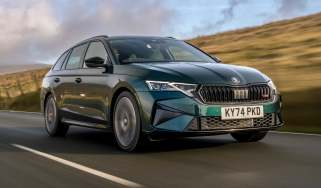Cool cars: the top 10 coolest cars in the world revealed
Our cool cars poll has revealed the top 10 coolest cars in the world according to you. And here they are…
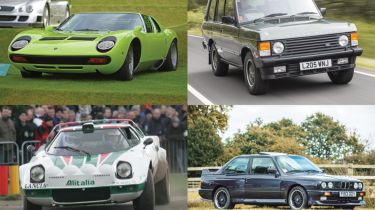
3. Lancia Stratos
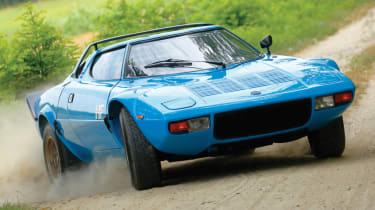
Concept car looks and rally-winning performance to back them up - the Lancia Stratos is so cool
Years: 1973-1978Number built: 492
What's cooler than building a car that looks like a concept car to go rallying in? Not much, and that's exactly what Lancia did when it introduced the Stratos. It was the replacement for the successful Fulvia HF, but rather than evolve that front-engine, rear-drive coupe, Lancia went mad and produced a stunning wedge of a car with a mid-mounted engine sourced from Ferrari. Can you think of anything cooler than something as radical as the Stratos storming down a forest track, flames spitting from its exhaust? That's what makes this a cool car.
The Stratos name originally appeared on a Lancia concept car seen in 1970, but the only thing that car and the rally Stratos have in common is the fact they were both designed by Marcello Gandini, the head designer at Bertone. The rally machine was preceded by the Stratos HF concept of 1971. This previewed the new car's radical shape and really stood out, and not just because it was painted fluorescent orange. Its wedge-shaped design and tiny cockpit area with next to no rearward visibility meant it looked like nothing else, and definitely not like a rally car.
• Ferrari 430 Scuderia-based Stratos replacement road test
However, that was the purpose of the Stratos, and to underline the point Lancia fitted it with the 2.4-litre V6 from the Ferrari Dino. This made 190bhp in 'Stradale' roadgoing spec, and Lancia was scheduled to build 500 cars to meet rallying regulations of the time.
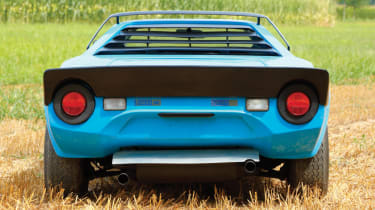
However, changes to the rules meant that only 492 were eventually made. Later cars came with a more powerful engine with 24-valve heads, compared to the original car's 12-valve configuration, and packed 320bhp. Combine this power with the car's lightweight and short wheelbase, and the Stratos proved nimble, if not a little twitchy at the limit of its capabilities.
The Lancia Stratos was one of the first cars to be built specifically to be competitive in rallying, and came almost a decade before the notorious Group B era. And it proved to be hugely successful, too, winning the World Rally Championship three years in a row from 1974-1976, and it was still winning rallies in the early 1980s. The rule makers tried to peg the Stratos back by limiting its performance, but the road car had a kerb weight under a tonne, and the rally cars were lighter still.
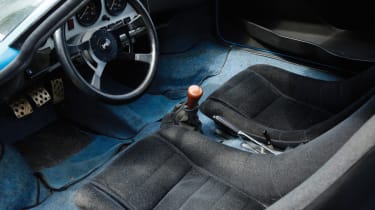
With such little weight for that Dino V6 to push along, it remained a competitive car for many years. Lancia even converted two examples for endurance racing by strapping a big turbo to the engine to break the 500bhp barrier and fitting massive wings, although neither car was very successful.
The Stratos has gone down in history as the radical rally car, but it set the template for Lancia's next forays into the world of rallying. The Lancia Rally 037 followed it in 1982 with a similar mid-engine, rear-drive layout, although it replaced the V6 with a turbo four. Then the wild Delta S4 added four-wheel-drive to the mix, a turbo and supercharged engine and bodywork that was barely recognisable from the road-going Delta.
4. Land Rover Defender
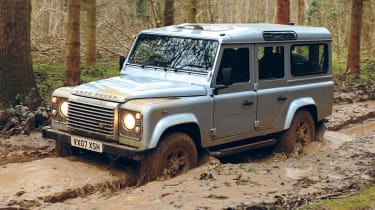
British and unbeatable off-road, the rough and ready Land Rover is an institution of cool
Years: 1948-2016Number built: Loads
Few cars have survived for as long as the original Land Rover did. While the last Defender is what we've named it in the list, we're counting the entire heritage of the car, all the way back to the 1948 original. In terms of history and longevity, only the Jeep and Mercedes G-Wagen can compete, but the former has evolved beyond recognition from the Willys original, while the latter is now a fashion trinket for the rich. In comparison, the Land Rover is fairly unique in the breadth of its abilities.
That's what makes it especially cool, because the Land Rover looks equally at home on the farm or in the city. Defenders have been used for all kinds of jobs, from remote Scottish farms to Home Counties building sites, as airport as fire engines, to tow boats for the coastguard and even in battle. The Defender really is the Swiss Army knife of utilitarian transportation.
The simplicity of the Defender is one of its plus points. There are no luxuries here, just seats, a heater, maybe a radio, and windows to keep the weather off, but that's just about it. Sure, you can spec up a Defender at an aftermarket conversion company so it's as plush as a G-Wagen, but you can be just as smart cruising the King's Road in a standard short-wheelbase XS model if you want to be seen.
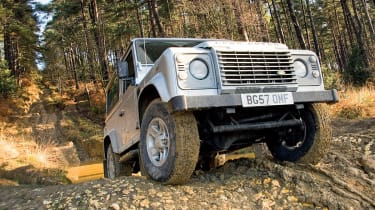
What people won't be aware of is exactly how much of a struggle it is to drive a Defender. While they may look good from the outside, it's a different experience altogether from behind the wheel. Heavy steering, a massive turning circle, a cramped driving position, wooden brakes, a heavy clutch and relaxed acceleration mean the Defender is from another era in terms of driving. Still, some people will enjoy the challenge of driving one, even more so if they take it off-road.
The Defender is next to unstoppable in the rough. The short wheelbase version is the one to go for, and its short overhangs and narrow body mean it'll get well off the beaten track without getting stuck. And there are plenty of aftermarket specialists who can kit a Defender out in all sorts of equipment to make it even more even capable when the going gets muddy.
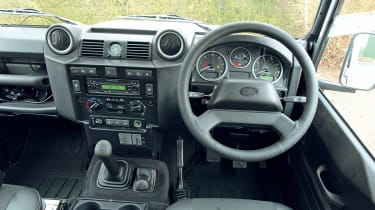
If you're looking to buy a Defender, our advice is to go for as late a model as possible. The best diesel engine is the last one, which is the 2.2-litre Duratorq from the Ford Transit. It's not outstandingly powerful, but is good enough, and is the most refined engine, too. If you can afford it, we'd recommend one of the limited edition final run cars, too. The Heritage Edition harks back to the 1948 original with its green paint and tan interior, while the Adventure gets a host of off-road upgrades. The Autobiography was the highest spec Defender there has ever been, although, with a list price of £61,000, it was also the most expensive.

